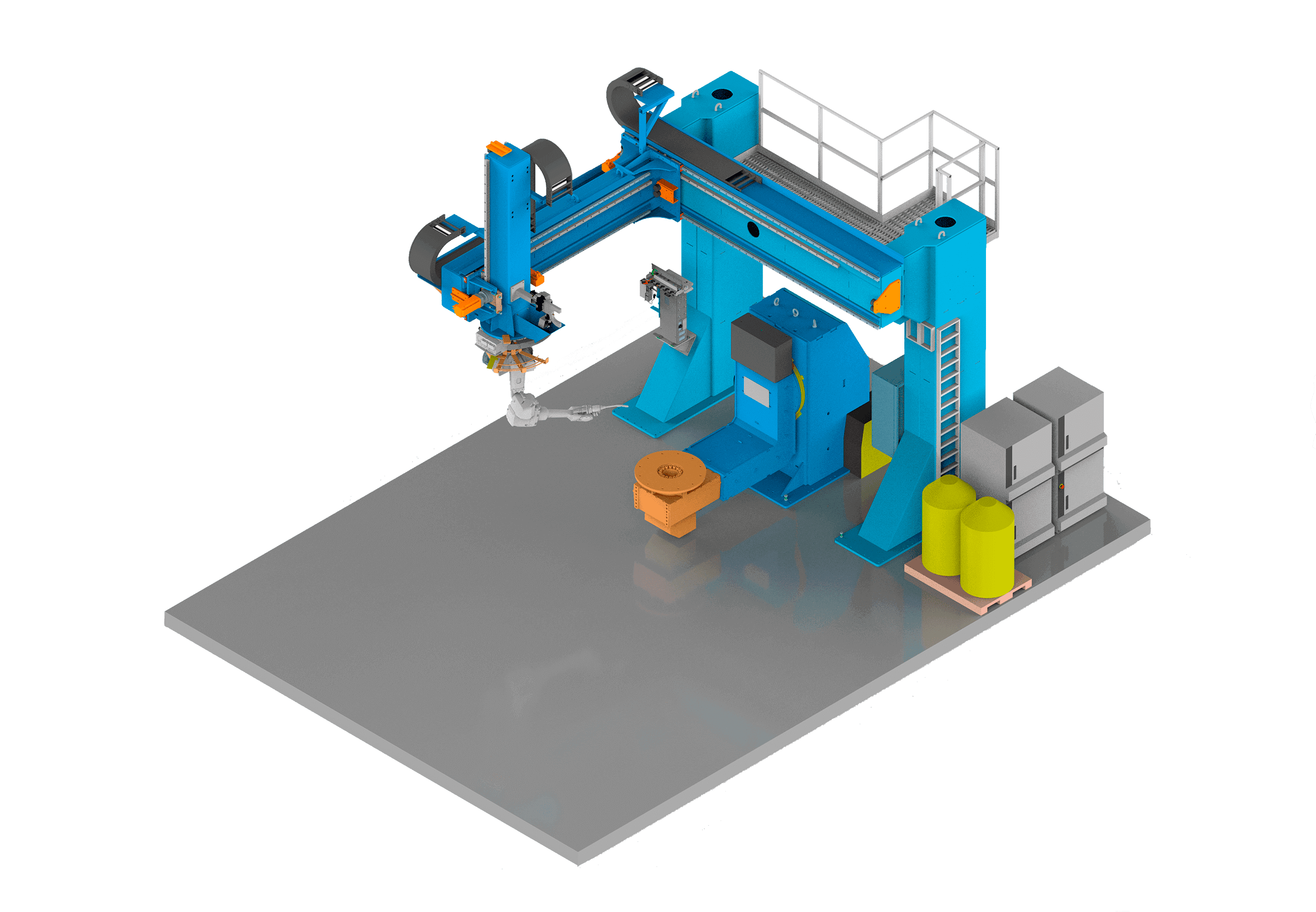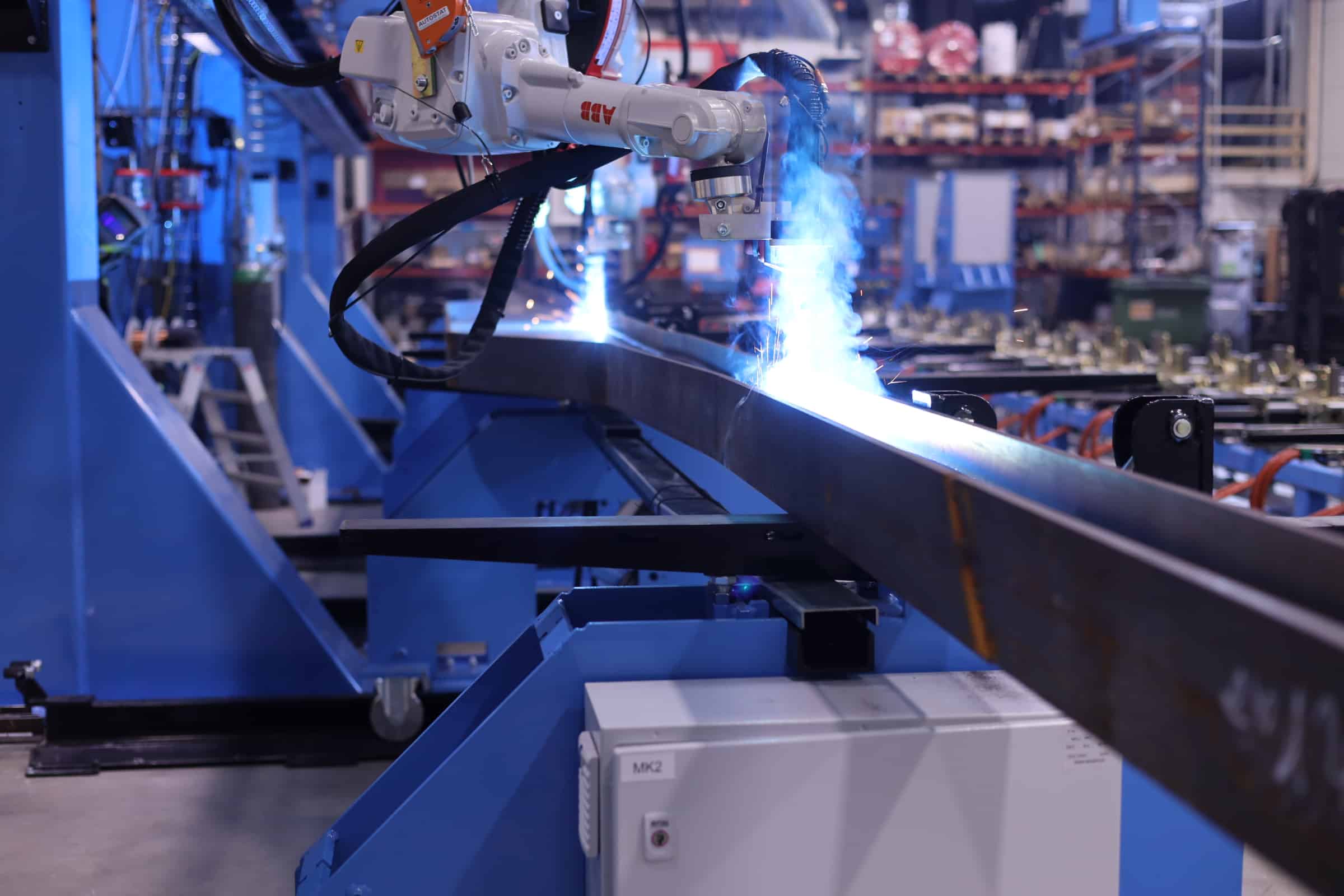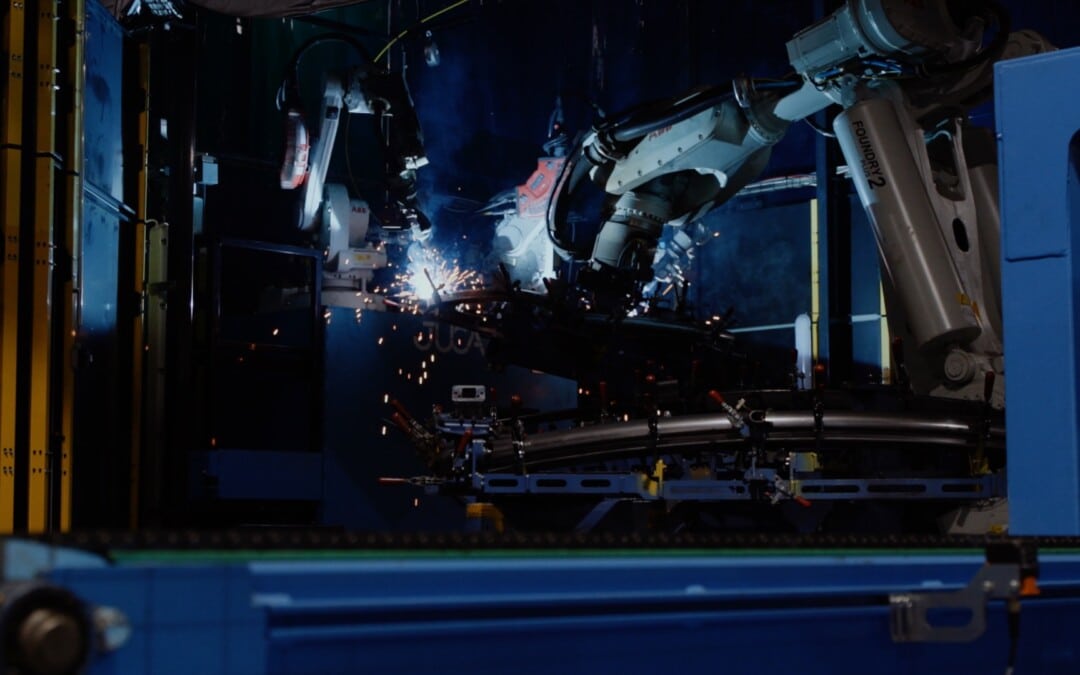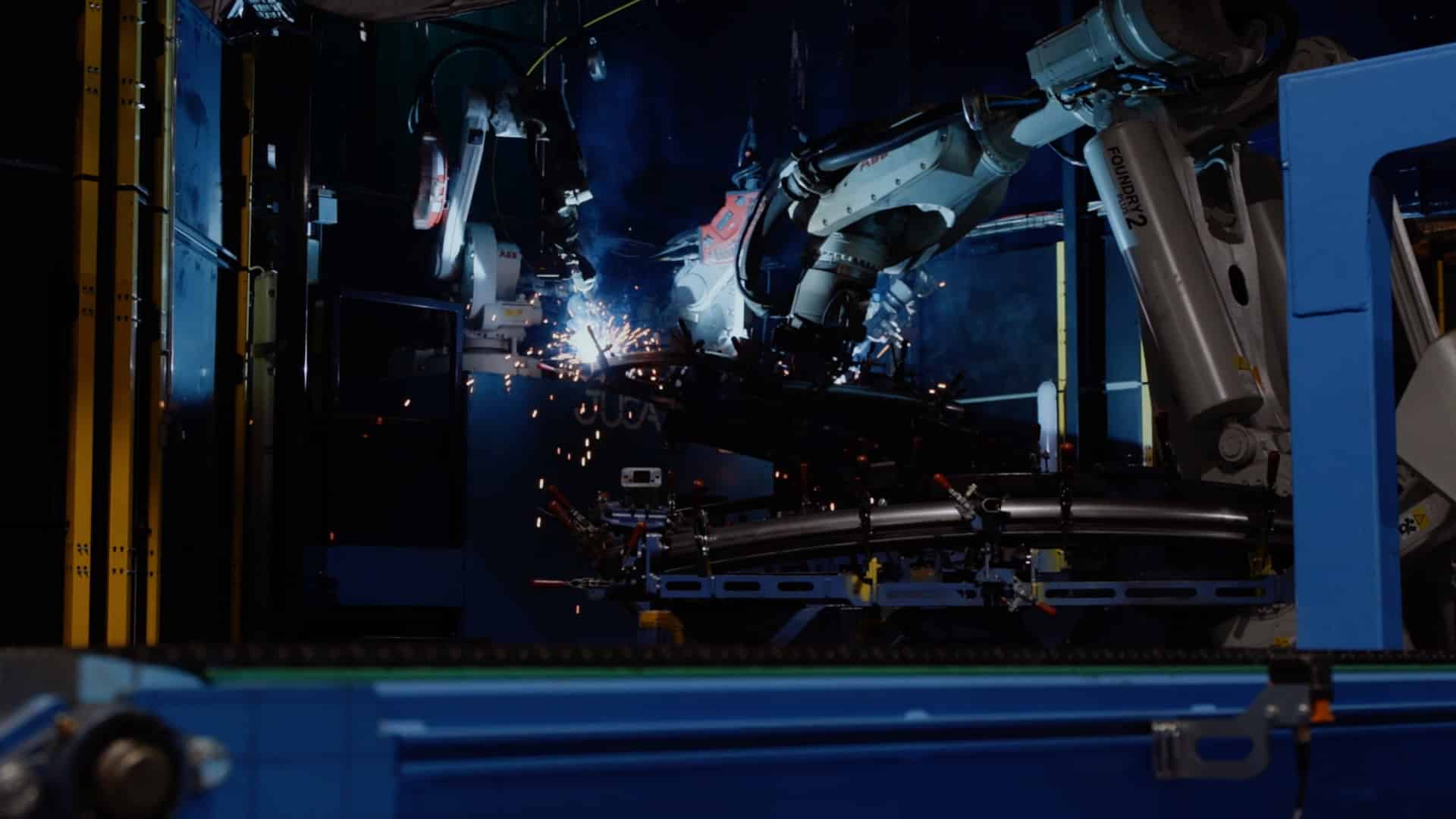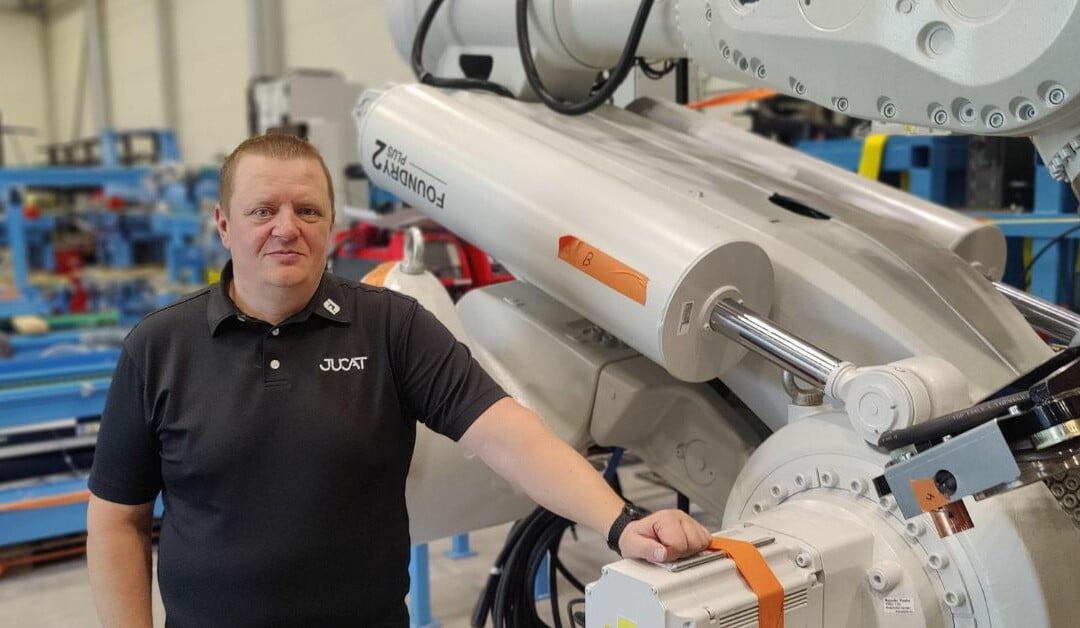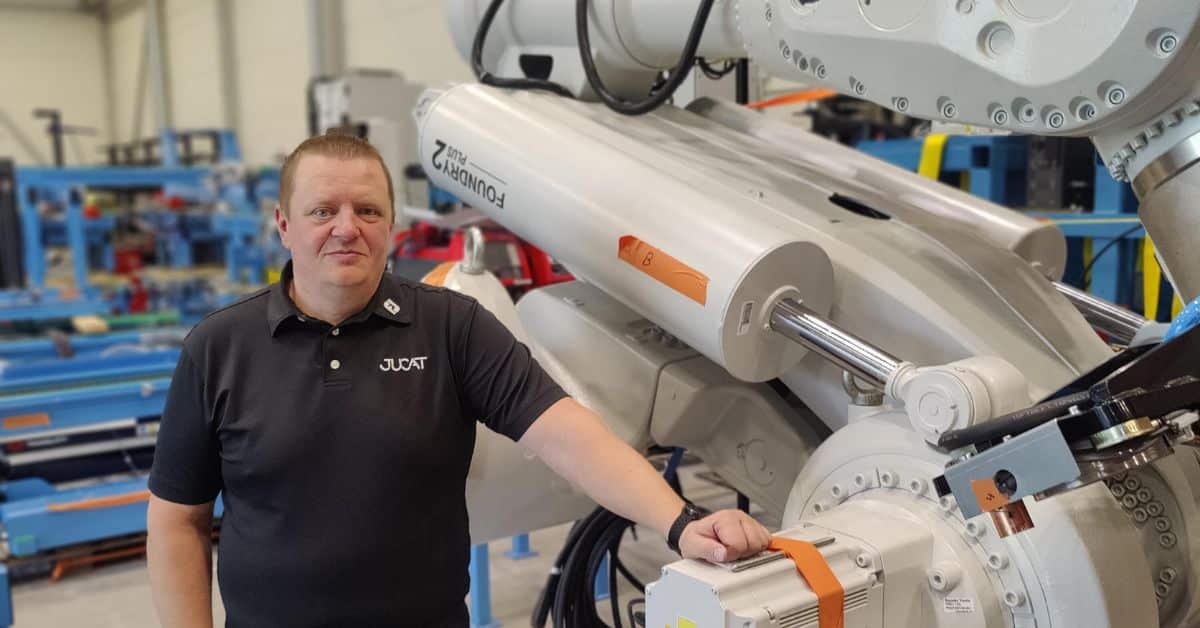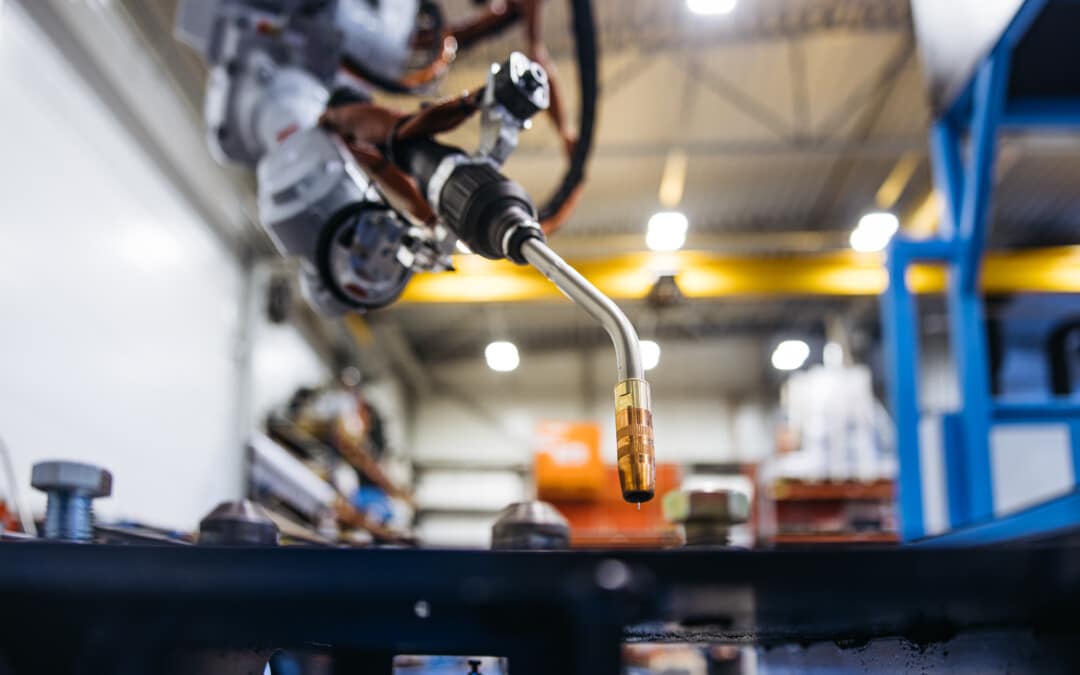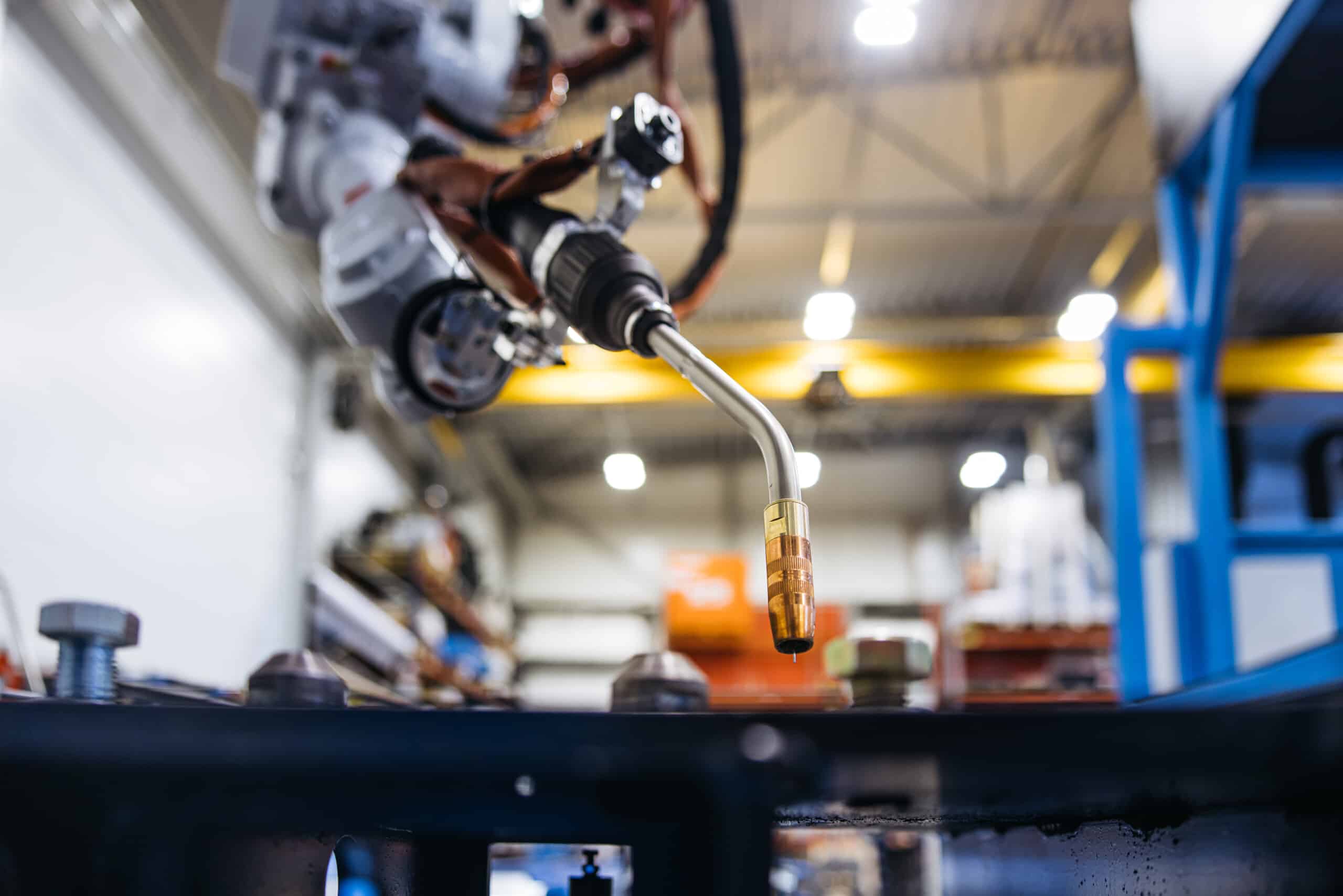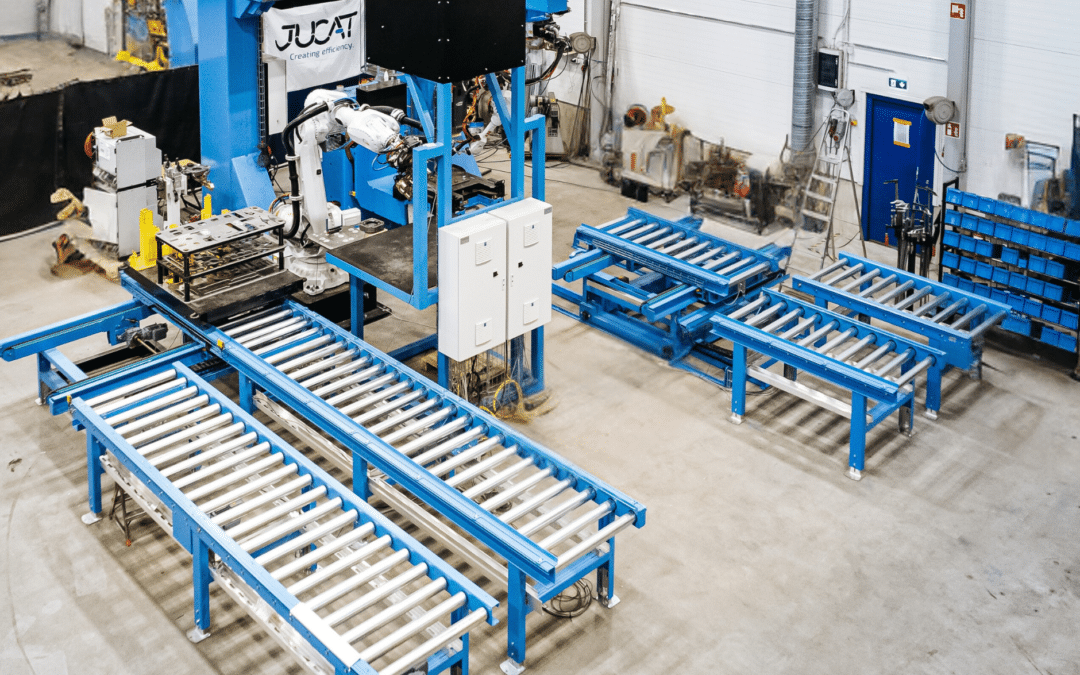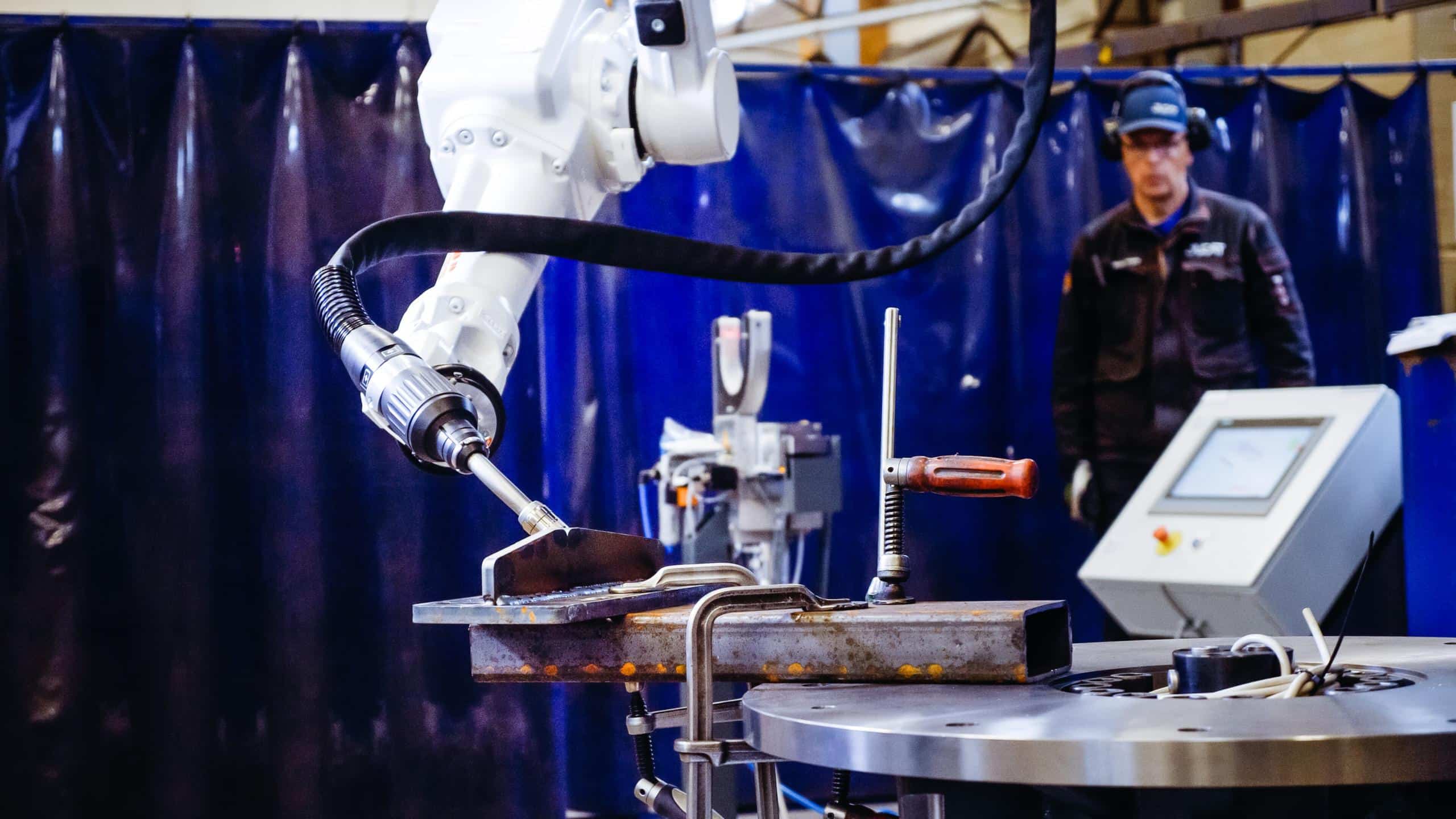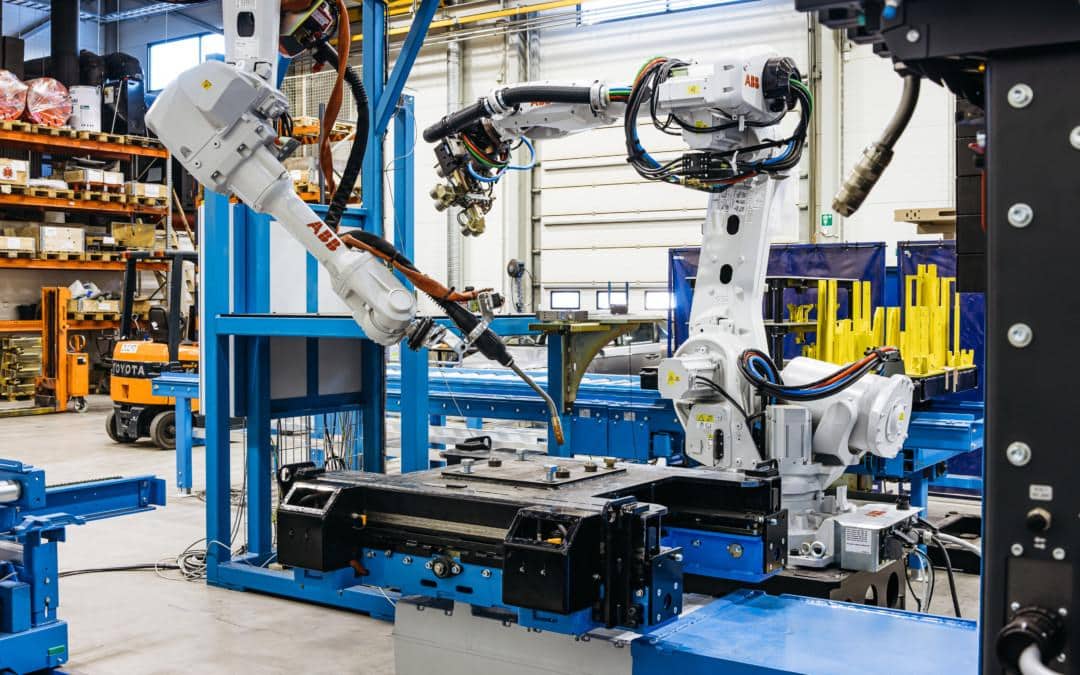
Understanding Welding Robots: Past, Present, and Future
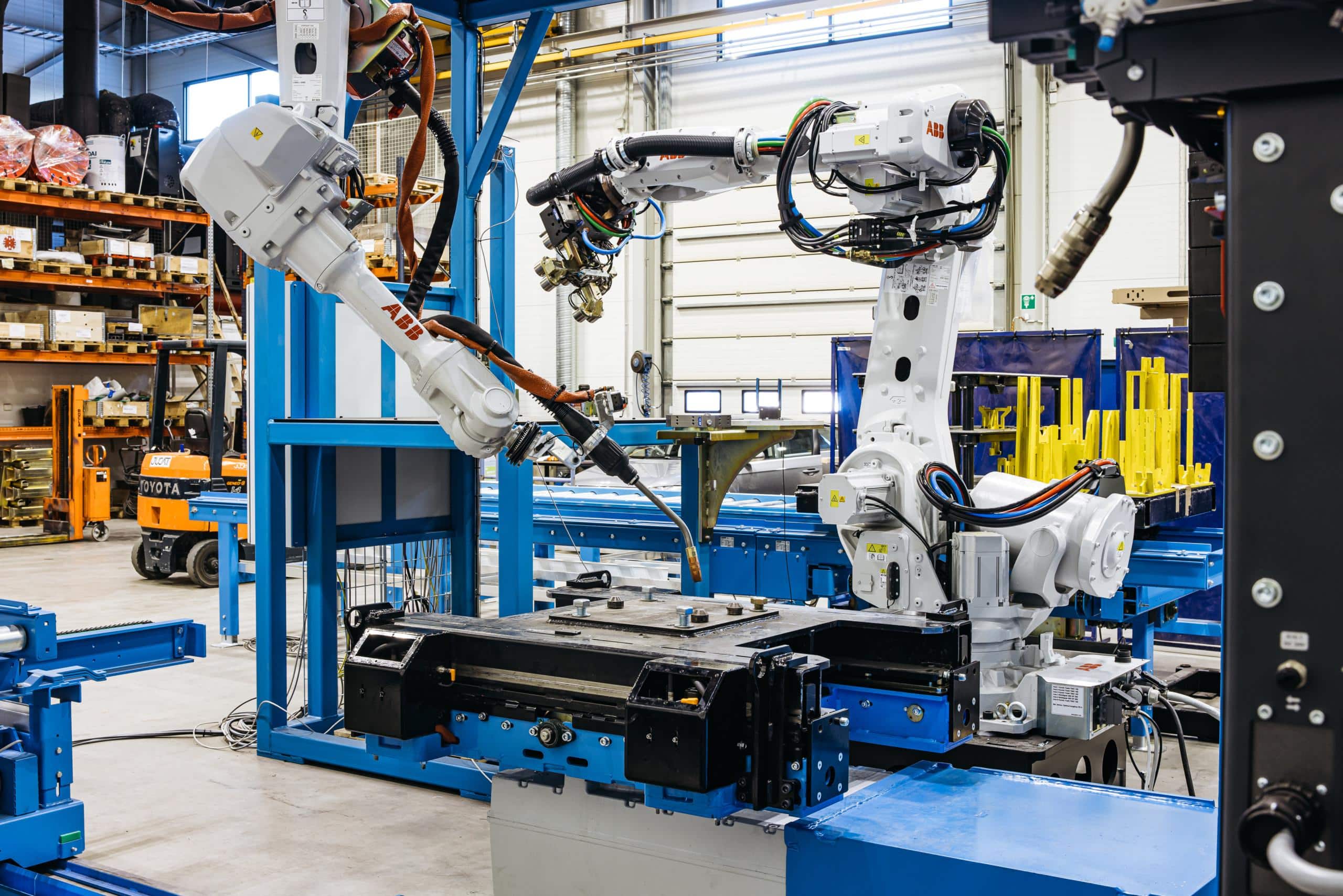
In 1961, a robotic arm named Unimate joined the assembly line at a General Motors plant, changing the course of manufacturing forever.
Robotics in welding operations has evolved significantly since that pioneering moment. What began as rudimentary, single-task machines has blossomed into highly sophisticated systems capable of performing complex welds with precision and repeatability. Today, these technological marvels not only enhance productivity but also ensure consistent quality, ushering in a new era of manufacturing excellence where human skill is complemented by robotic precision.
Genesis of Automated Welding
The inception of automated welding can be traced back to the mechanization era, where the relentless pursuit of efficiency propelled the transition from manual torches to the first rudimentary welding automation. In the 1960s, the development of the Unimate robot, the progenitor of modern robotic arms, marked a pivotal moment for industrial automation and laid the groundwork for subsequent advancements in robotic welding technology.
Embracing this transformative leap, industries rapidly integrated these robotic solutions, leveraging their capacity to bolster productivity, enhance weld consistency, and diminish the incidence of human error. This pioneering stage set a precedent for innovation, driving a relentless quest to refine and optimize the performance of welding robots for an increasingly competitive manufacturing landscape.
Invention and Early Applications
The first welding robot was introduced in the 1960s, marking a seminal moment in manufacturing automation. The goal was clear: improve productivity and consistency.
As industrial players deployed these robots, they capitalized on the promises of speed, repeatability, and reduced labor costs—cornerstones of mass production efficiency.
Welding robots revolutionized fabrication, surpassing the accuracy and endurance of human welders.
Since their inception, these mechanical marvels have evolved, enhancing joint quality with unyielding precision, and redefining the benchmarks of automated welding excellence.
Transition from Manual to Automated
The shift toward automation began with simple, repetitive tasks, where precision and consistency were critical to product quality.
Manual welding required skill and patience that machines could easily replicate.
Gradually, machines became more reliable for consistent weld quality, outpacing manual proficiency.
Advances in control systems and sensory feedback made robots adept at complex welds, rivaling expert welders.
These strides in technology enabled seamless integration into existing workflows, leading to widespread adoption across various industry sectors.
Today, the trajectory is clear toward fully autonomous robotic welding systems, promising even greater efficiency and precision.
Welding Robots Today
The landscape of welding is now dominated by sophisticated robotic systems that perform with a level of consistency and precision that traditional methods cannot match. These automated giants excel in environments where repeatability and unwavering accuracy are paramount, tirelessly executing welds with minimal human intervention. The evolution of control software and hardware means that these robots can handle a myriad of welding tasks, from delicate electronics to robust structural components, all while minimizing waste and optimizing production time.
In the current climate, welding robots are increasingly leveraging advanced sensors and artificial intelligence to adapt to varying materials and welding conditions in real-time. Known as “adaptive welding”, this capability allows for on-the-fly adjustments to variables such as speed, angle, and temperature, thus ensuring optimal weld quality even in the face of unforeseen changes. With connectivity at their core, these robots integrate smoothly into smart manufacturing environments, and are paving the way for the next industrial evolution where automation becomes not just a tool, but a strategic asset in the global manufacturing landscape.
Technological Advancements
Robotics in welding has undergone transformative developments, from rudimentary automated arms to sophisticated autonomous systems. Pioneering the integration of precision servomotors, robots achieved new heights in maneuverability.
By harnessing the Internet of Things (IoT), welding robots now excel in predictive maintenance, reducing unexpected downtimes and enhancing efficiency. This interconnectedness facilitates seamless data exchange for continuous process improvement.
Moreover, the advent of machine vision systems in welding robots has revolutionized quality control. These systems enable robots to perceive and interpret their environment, adjusting techniques for the utmost precision in real-time.
The next leap in robotic welding technology involves the utilization of collaborative robots or “cobots”. These cobots work synergistically with human operators, combining human dexterity with robotic consistency.
Artificial Intelligence (AI) continues to push the boundaries of what welding robots can achieve. AI-driven analytics and decision-making herald a new era in welding automation, with smarter, more adaptable robotic systems.
Industries Embracing Automation
Automation transcends traditional manufacturing realms.
With the surge in robotic applications, diverse sectors adopt welding automation. Automotive and construction industries have been forerunners, leveraging robotic precision for structural integrity and production speed. Significantly, the energy sector, particularly in renewables, is increasingly reliant on automated welding for large-scale projects.
Welding robots are instrumental in aerospace construction.
A notable shift is occurring across the medical sector – in the production of intricate devices. Furthermore, the shipbuilding industry harnesses robotic welding technology to ensure high-quality standards are met and maintained. Lastly, the robotics sector is self-enabling, advancing its construction through the use of its own automated welding systems.
The oil and gas industry’s adaption signifies market growth.
Collaborative Robotics in Welding
The advent of collaborative robots, or cobots, marks a transformative epoch in the field of welding. These highly sophisticated machines are engineered to work safely alongside human operators, enhancing welding tasks with their dexterity and consistency. Their design philosophy prioritizes user interaction and safety, facilitating an integrated human-robot workflow that optimizes production efficacy.
Cobots in welding epitomize the harmonization of human skill with robotic precision. Emerging as invaluable assets, they augment the workforce, allowing for reallocation of human expertise to more complex, cognitive tasks. This symbiosis promises to continually redefine productivity and quality in welding applications.
Human-Robot Workforces
The integration of robotic systems within human-driven processes is reshaping production dynamics.
-
Collaboration – Robots assist humans with tedious or hazardous tasks, promoting safety and efficiency.
-
Flexibility – Adaptability to new tasks and environments allows smooth human-robot work transitions.
-
Learning and Adaptation – Robotics equipped with AI continually improve through machine learning, enhancing teamwork.
-
Supervisory Roles – Humans largely assume monitoring and decision-making roles, supervising robotic counterparts.
These synergistic teams leverage the strengths of both entities to boost productivity.
Robot-assisted operations are setting new paradigms for safety and quality control in industrial settings.
Enhanced Precision and Safety
Robotic welding has revolutionized industrial accuracy.
Welding robots are equipped with fine motion control and repeatability, which significantly improves weld quality. They can adhere to precise parameters within a fraction of a millimeter, ensuring consistent and high-quality joins. This level of precision is integral to the integrity and safety of welded structures, particularly in industries where weld failure is not an option.
The risk of human error is markedly mitigated.
Automated systems safeguard against occupational hazards – as they handle high-heat, fumes, and repetitive motions – allowing human workers to focus on supervisory and inspection tasks in safer environments.
The burgeoning field of welding robotics is inherently tied to safety advancements. When paired with contemporary sensing technologies and safety protocols, robots contribute to a significant reduction in workplace accidents, maintaining stringent compliance with industry standards.
In coming years, the convergence of robotics with emerging technologies will further elevate precision and safety standards, emphasizing the importance of updated safety regulations in the rapidly evolving landscape of robotic welding.
A Look Into the Welding Future
The advent of artificial intelligence (AI) and machine learning promises to revolutionize robotic welding, bringing forth an era of self-optimizing robots that can learn from their own experiences and improve over time. Advanced sensor fusion and real-time analysis will enable these autonomous systems to adapt to varying materials and conditions, ensuring superb weld quality under any circumstance.
Looking ahead, collaborative robots (cobots) equipped with advanced safety features are set to work side by side with human technicians, thereby enhancing productivity while still prioritizing human expertise. As we approach these technological frontiers, the symbiosis of human ingenuity and robotic precision will further redefine excellence in welding practices.
Innovations on the Horizon
Robotic welding is on the cusp of significant advancements in adaptive control systems. Enhanced algorithms will enable robots to modify parameters in real-time, streamlining the welding process.
The integration of augmented reality (AR) in robotic welding is poised to facilitate unprecedented levels of precision. By overlaying digital information onto the physical weld space, welders can achieve more accurate joint completion.
Machine vision systems are evolving, set to offer greater weld seam tracking capabilities. This will reduce errors and improve overall weld integrity, even in complex or variable welding scenarios.
Developments in ultra-flexible robotics, such as soft robotics, have the potential to transform the industry. These systems may navigate tight spaces and execute delicate welds that rigid robots cannot.
Laser welding technologies are also progressing, promising faster welding speeds and higher quality welds. As lasers become more precise and energy-efficient, their adoption in robotic welding is expected to soar.
The Prospects of AI Integration
Artificial Intelligence (AI) in robotic welding heralds a transformative shift in manufacturing efficacy and weld quality.
With AI, robotic welding is set to surpass traditional limitations, achieving unprecedented precision and autonomy.
Get familiar with our content
Follow us to get the latest news!
Jucat offers tailormade solutions for your robot welding needs
- Designed and assembled by Jucat
- Different welding techniques
- Different levels of automation
- Using ABB Robotics

